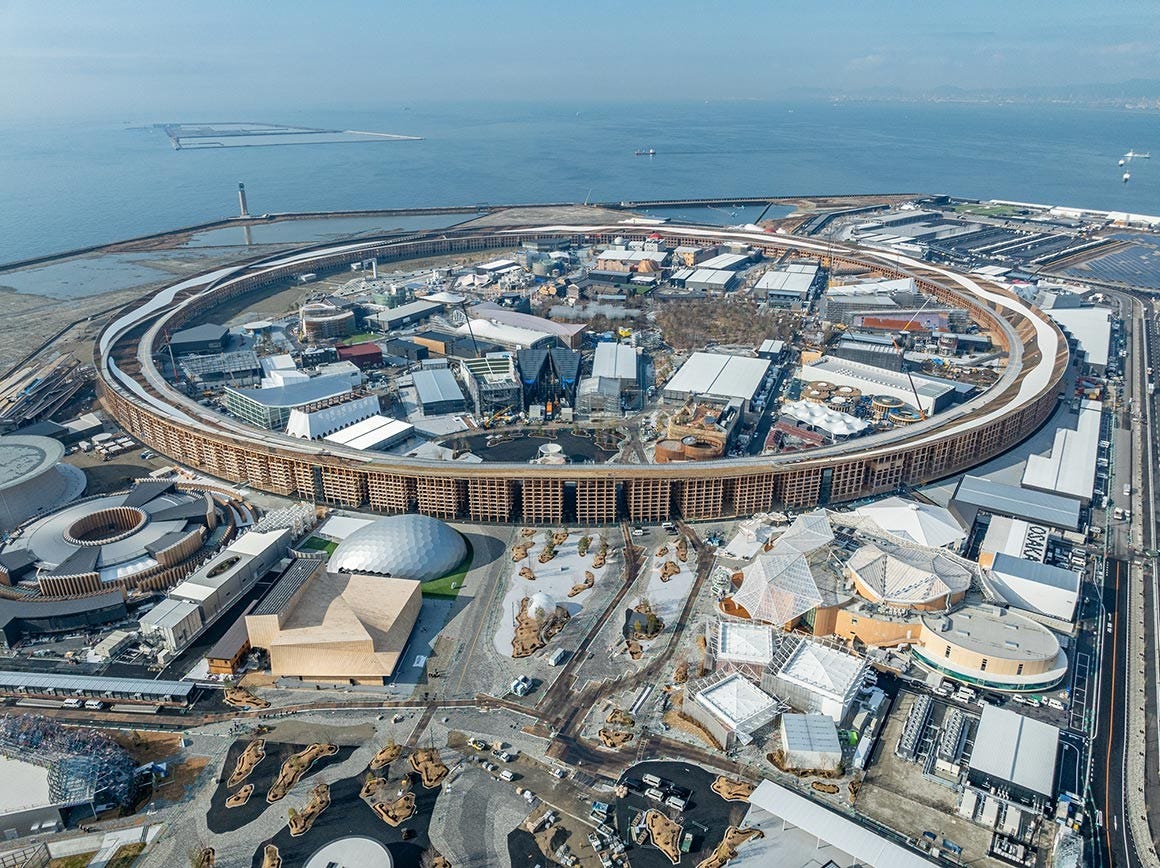I enjoy the atmosphere, the “global village feel” of their setup, the protocol and pride around the national pavilions and the very different ways they all choose to showcase their countries and topics. My first Expo was Hannover in the year 2000, wandering across the area, puzzled by a vertical Dutch farm and a birch forest within Finland’s presence. Since then, I had the opportunity to be in Shanghai, Milan, and Dubai, as well as in Yeosu for a “small” (Specialised) World Expo. And I hope to make it to Osaka to see this year’s edition as well.
A few weeks back, this 2025 World Expo opened its doors on Yumeshima Island. Themed “Designing Future Society for Our Lives,” Expo 2025 Osaka hosts over 160 countries and organisations that showcase innovations aimed at addressing global challenges. But most of all, it offers a six-month opportunity for people from around the world to connect – as the role and purpose of these “Universal Expos” has changed a lot since the first one in 1851.
From Industrial Showcases to Platforms for Dialogue
This inaugural World Expo, the Great Exhibition of 1851 in London, was a monumental display of industrial prowess, featuring innovations like the telegraph and the sewing machine. Over time, these expos introduced the world to unique designs and attractions such as the Eiffel Tower in Paris in 1889 and an 80 meters tall ferris wheel in Chicago in 1893.
These times are long gone, though, and modern day World Expos have struggled to keep a comparable visibility as showcases of technological advances – a space now covered by trade shows, tech events, and conferences. For example, tech innovations are nowadays presented on the CES show floor in Las Vegas, cars premiere at the Shanghai Motor Show (coming up next month), ideas are presented at TED in Vancouver, and the latest in construction machinery at BAUMA in Munich.
The Perception Challenge
Still, when many of our stakeholders, especially in governments, talk about “expos”, they reference not “our” business events, but the World Expos. But policymakers are increasingly acknowledging the economic and cultural significance of business events. Ongoing industry advocacy helps to make the point that trade shows, conferencs, and business gatherings contribute to local economies, foster innovation, and enhance international collaboration. Unlike the infrequent World Expos, regular business events provide continuous platforms for progress and should receive commensurate attention and support.
Partner Formats – not competitors
Accordingly, the Bureau International des Expositions (BIE), which oversees these events, now positions World Expos as “forums for addressing universal challenges and fostering international cooperation”. The BIE’s mission emphasises the importance of cultural exchange and collaborative problem-solving in an increasingly interconnected world.
Osaka’s signature building – it’s Eiffel Tower if you wish – is The Grand Ring, a 20-meter-high wooden structure encircling the expo site, symbolising unity and sustainability. Despite challenges like budget overruns and construction delays, organisers aim to attract 28 million visitors over the six-month duration.
For sure, the 2025 Expo will create interest and awareness for Japan, especially valuable after the country’s huge investment into hosting the Olympic Games in Tokyo became such a muted affair due to the pandemic – taking place one year later and, essentially, without spectators on site in a pandemic bubble. The city has been working hard to secure a societal legacy from the games.
This highlights the risk of such mega-events as well, adding to the huge investments and the challenges of legacy use of the custom-built venues. Dubai – host of the previous World Expo – is in the process of converting the former Expo site into “Expo City Dubai”, with parts also being uses as exhibition venue. And in Riyadh, planning is underway for the 2030 edition of the World Expo.
For destinations to succeed here, and for an ongoing good partnership between signature one-off events like the “World Expo” and recurring, innovation- and development-driving events like trade-shows and conferences, it is key to plan infrastructure and sector development in a combined way – using the legacy events to fast-track event capabilities for the decades afterwards. This then, again, will define an Expo’s lasting legacy - and keep it relevant.






